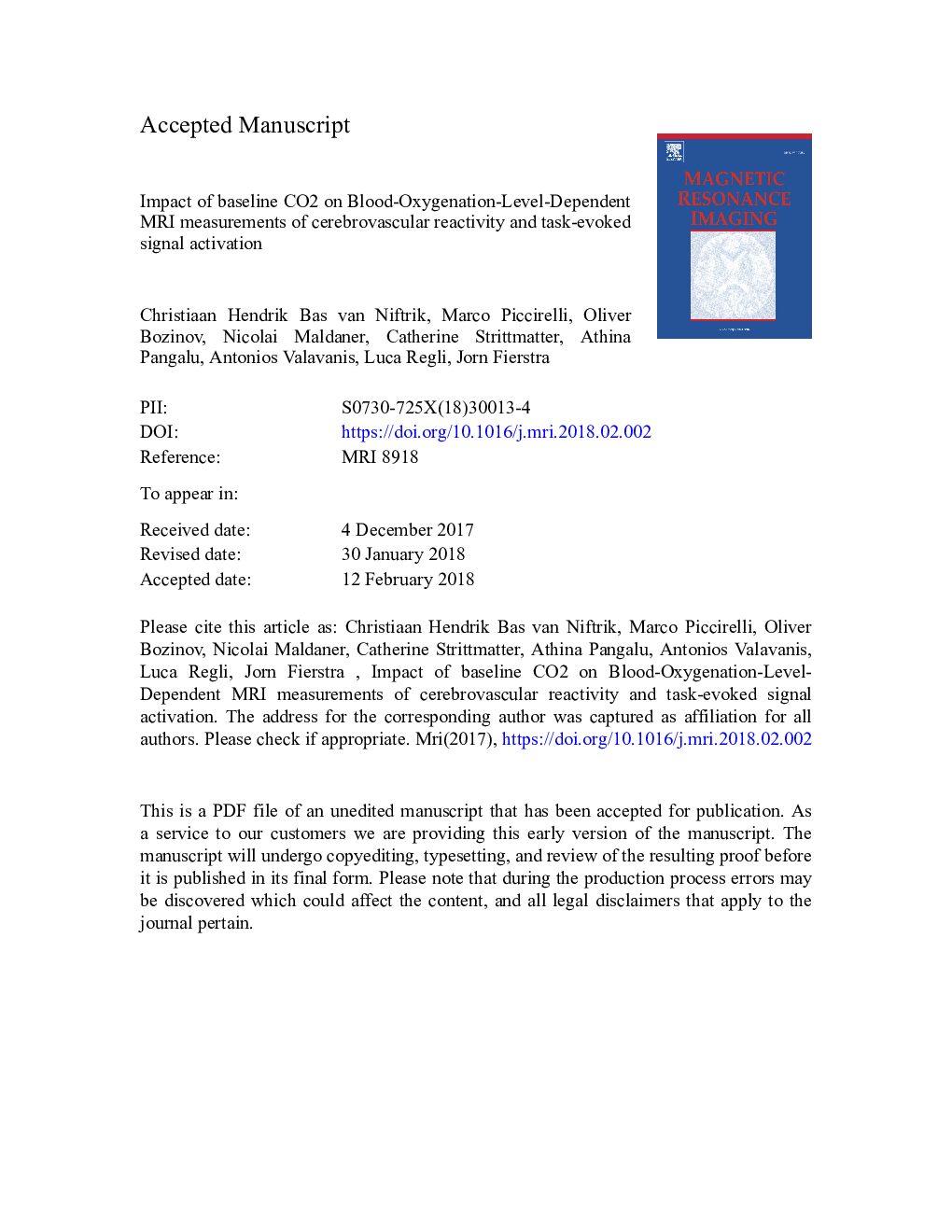| Article ID | Journal | Published Year | Pages | File Type |
|---|---|---|---|---|
| 8159873 | Magnetic Resonance Imaging | 2018 | 24 Pages |
Abstract
Based on this premise, the correlation of this BOLD signal increase with a particular task, such as finger-tapping, is used to map neuronal activation. This signal increase may be dampened in brain areas exhibiting impaired cerebrovascular reactivity (BOLD-CVR), leading to false negative activation. Blood-oxygenation-level-dependent (BOLD) cerebrovascular reactivity (CVR) has also been used to optimize task evoked BOLD signal changes. To measure BOLD-CVR, controlled BOLD-CVR studies have commonly been performed using a preset isocapnic carbon dioxide (CO2; ~40â¯mmHg) baseline, independent of subjects' resting CO2. This arbitrary baseline, however, may influence BOLD-CVR measurements. We therefore performed BOLD-CVR, as well as BOLD fMRI during a controlled bilateral finger-tapping task in two groups of ten subjects: group A at subject's resting CO2 and group B at a preset isocapnic CO2 baseline (40â¯mmHg). Whole brain BOLD-CVR was significantly decreased for group B (group A 0.26 (SD 0.05) vs group B 0.16 (SD 0.05), pâ¯<â¯0.001). For the predefined hand area in the precentral cortex, BOLD-CVR and BOLD fMRI signal changes were significantly lower for group B (group A 0.20 (SD 0.04) vs group B 0.13 (SD 0.05), pâ¯<â¯0.01; 1.19 (SD 0.31) vs 0.62 (SD 0.37), pâ¯<â¯0.01).CO2 levels significantly influence both BOLD-CVR and BOLD fMRI measurements. Hence, for an accurate interpretation, baseline CO2 levels and BOLD CVR should be considered complementary to task evoked BOLD fMRI.
Related Topics
Physical Sciences and Engineering
Physics and Astronomy
Condensed Matter Physics
Authors
Christiaan Hendrik Bas van Niftrik, Marco Piccirelli, Oliver Bozinov, Nicolai Maldaner, Catherine Strittmatter, Athina Pangalu, Antonios Valavanis, Luca Regli, Jorn Fierstra,
